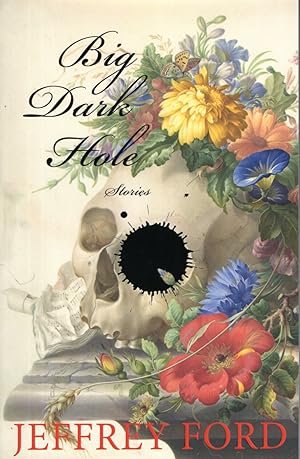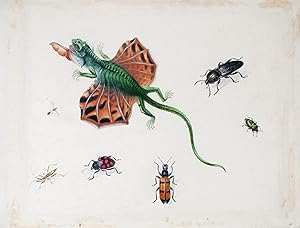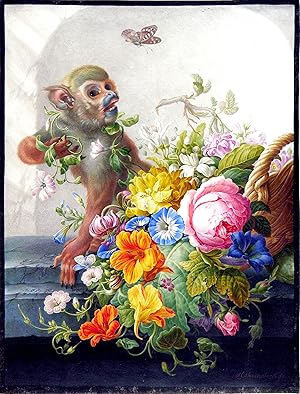herman henstenburgh (3 résultats)
Type d'article
- Tous les types d'articles
- Livres (3)
- Magazines & Périodiques
- Bandes dessinées
- Partitions de musique
- Art, Affiches et Gravures
- Photographies
- Cartes
-
Manuscrits &
Papiers anciens
Etat
- Tous
- Neuf
- Ancien ou d'occasion
Reliure
- Toutes
- Couverture rigide
- Couverture souple (1)
Particularités
- Edition originale (1)
- Signé (1)
- Jaquette
- Avec images
- Sans impression à la demande
Pays
Evaluation du vendeur
-
Big Dark Hole: And Other Stories
Edité par Small Beer Press, Easthampton, 2021
ISBN 10 : 161873184XISBN 13 : 9781618731845
Vendeur : Ziesings, Shingletown, CA, Etats-Unis
Livre Edition originale
Herman Henstenburgh (illustrateur). Easthampton: Small Beer Press:, 2021. First edition, TPBO, Trade paperback, New, 202 pp. Cover artwork by: Herman Henstenburgh Jeffrey Ford is one of our favorite writers. He's just . . . . good. "A Jeffrey Ford story may start out in the innocuous and routine world of college teaching or evenings on a porch with your wife. But inevitably the weird comes crashing in. Maybe it's an unexpected light in a dark and uninhabited house, maybe it's a drainage tunnel that some poor kid is suddenly compelled to explore. Maybe there's a monkey in the woods or an angel that you'll need to fight if you want to gain tenure. Big Dark Hole is about those big, dark holes that we find ourselves once in a while and maybe, too, the big dark holes that exist inside of us." First edition, TPBO, Trade paperback, New,
-
A Flying Lizard, Surrounded by Beetles and Other Insects
Vendeur : Arader Galleries Drawings & Watercolors, New York, NY, Etats-Unis
No Binding. Etat : Near Fine. HERMAN HENSTENBURGH (DUTCH, 1667-1726) A Flying Lizard, Surrounded by Beetles and Other Insects Watercolor and gouache on paper Paper size: 7 x 10 1/4 in The development of natural history painting paralleled progress in the field of science. Drawing played an essential role in the advancement of natural history. The influence of animal and plant illustration directly affected the development of allegorical and trompe l il painting. The Dutch were at the forefront of these developments and managed to forge a remarkable synthesis between concern for scientific truth and the decorative and exotic aspects of natural history. Imaginative compositions joined flowers and birds with insects and reptiles to create fantastical juxtapositions imbued with symbolic meaning. Snakes, lizards, and frogs had powerful symbolic connotations and were related to Medusa's theme. Butterflies were also associated with mythology and specifically the story of Psyche and the theme of Vanities. The caterpillar corresponds to man, the chrysalis to death, and the butterfly to the soul after the resurrection. Herman Henstenburgh produced exemplary examples of this genre. In his remarkable paintings, he creates a play of lines and colors that can be appreciated not merely for its decorative aspects but also as a departure from the naturalist's strictly narrative view towards an art approaching abstraction. Henstenburgh was a pupil of Johannes Bronckhorst, a fellow native of Hoorn in the Netherlands. According to contemporary accounts, his early works imitated those of his master, depicting birds and landscapes. He later broadened his repertoire to include exquisite flower and fruit pieces and occasional woodland still-lifes. For his flawless draftsmanship and vibrant colors, Henstenburgh won considerable renown even during his lifetime. Loca: 6.3WCC.8D.
-
Still-life with a monkey and a basket of flowers on a stone ledge
Vendeur : Arader Galleries Drawings & Watercolors, New York, NY, Etats-Unis
Signé
No Binding. Etat : Fine. HERMAN HENSTENBURGH (DUTCH, 1667-1726) Still-life with a monkey and a basket of flowers on a stone ledge Watercolor and gouache within black framing lines, on vellum Paper size: 16 1/2 x 12 3/4 in Frame size: 25 1/2 x 21 7/8 in Signed l. r.: H. Henstenburgh. fec= Provenance: Pieter van den Brande and/or Johan Pieter van den Brande, Middelburg; by descent to E. C. Baron van Pallandt; sold by him, Amsterdam, Mak van Waay, 26 September 1972, lot 336; private collection The development of natural history painting paralleled progress in the field of science. Drawing played an essential role in the advancement of natural history. The influence of animal and plant illustration directly affected the development of allegorical and trompe l il painting. The Dutch were at the forefront of these developments and managed to forge a remarkable synthesis between concern for scientific truth and the decorative and exotic aspects of natural history. Imaginative compositions joined flowers and birds with insects and reptiles to create fantastical juxtapositions imbued with symbolic meaning. Snakes, lizards, and frogs had powerful symbolic connotations and were related to Medusa's theme. Butterflies were also associated with mythology and specifically the story of Psyche and the theme of Vanities. The caterpillar corresponds to man, the chrysalis to death, and the butterfly to the soul after the resurrection. Herman Henstenburgh produced exemplary examples of this genre. In his remarkable paintings, he creates a play of lines and colors that can be appreciated not merely for its decorative aspects but also as a departure from the naturalist's strictly narrative view towards an art approaching abstraction. Henstenburgh was a pupil of Johannes Bronckhorst, a fellow native of Hoorn in the Netherlands. According to contemporary accounts, his early works imitated those of his master, depicting birds and landscapes. He later broadened his repertoire to include exquisite flower and fruit pieces and occasional woodland still-lifes. For his flawless draftsmanship and vibrant colors, Henstenburgh won considerable renown even during his lifetime. Loca: 6.3WCC.4D.




